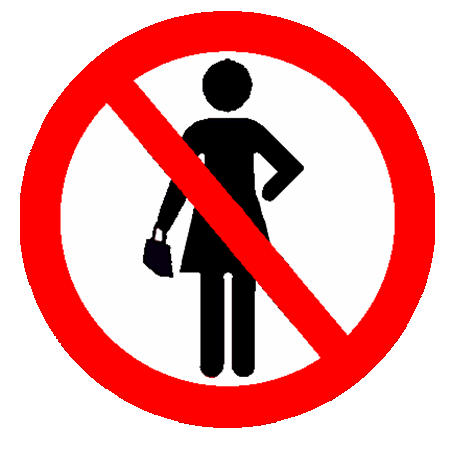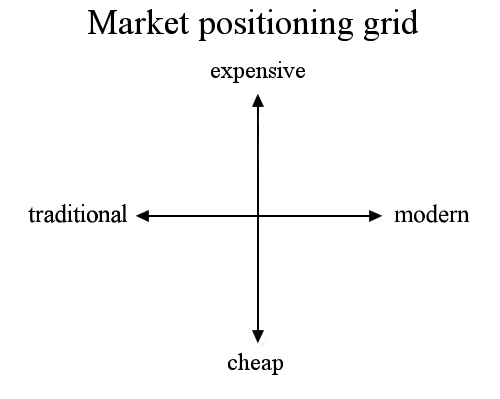What are handbags for? Offer a critical semiotic analysis of how handbags signify.
For general guidance about what is expected in your essays for this module,
see the
general criteria.
Please remember to avoid footnotes and to include an
alphabetical list of 'References' which have been cited in the text
(not a Bibliography of anything you have read for the essay). This list should include
author's names, date, book titles (in italics), place of publication and publisher.
Within the text always cite author's surname, date and page number. Double-space your
text and number your pages. For more detailed notes on writing essays in this
department, click
here.
Advice for this particular assignment:
Identify basic types and sub-types, for which you are welcome to seek assistance from friends. If you use
Google images you can easily find hundreds of images of handbags which you can try to group on the basis of
visual similarities (including fabrics, colours and shapes).
You should include a chart with labels indicating the basic types you have identified.
Do such types relate in any way to class, age, formality or subcultures?
Consider the general symbolism of handbags as well as the signification of different types. Why are they
distinctively feminine? How close can the design of a man's bag get to a woman's handbag without becoming one?
Solicit the comments of any friends who have several handbags. What significance to
handbags have for their owners? Do they feel that their bags say something about them?



Remember that quotation from Nancy Henley in Lecture 2:
‘The function of the purse [handbag] as women’s albatross makes it a symbol of ridicule;
many caricatures of women (by both females and males) utilize a purse as a comic focus,
and impersonations of male homosexuals likewise use a purse as a sort of badge of shame.
(Obviously, its psychoanalytic implications as a "vessel", a treasure chest that may be opened or closed, are not lost in these interpretations)’
(Henley 1977, p. 90). How do handbaggers react to that? Don't get too sidetracked into Freudian symbolism, however.
You are expected to demonstrate your
understanding of relevant semiotic concepts. These are likely to include codes, paradigms, oppositions,
markedness and the commutation test. Wayne Dynes (personal correspondence, 8/2/2013) offered this suggestion for a structuralist analysis:
Here is the approach I would take were I a student. It is what I call the bursary triangle (based on the notorious
culinary triangle of Claude Lévi-Strauss). There are three main types of materials used: leather, cloth, and plastic.
Animal, vegetable, mineral. There are also binaries, as impermeable (leather and plastic) vs. permeable (cloth), and
natural (leather and cloth) vs. artificial (plastic)... The Latin word for these objects is "bursa." That reminds me that there is a
medieval reliquary in this shape called a bursa. Can handbags be regarded as modern, secularized versions of reliquaries?


Of course, if you use this kind of approach you might choose different binaries, such as functional vs. decorative and/or
subtle vs. strident. Perhaps such concepts can be derived from the ways in which handbag users themselves talk about them.
Alternatively, you can explore the way in which such products are 'positioned' in the market in relation to price and innovation.
In discussing sex and gender, remember the distinction: 'sex' being a biological category and 'gender' a cultural category.
If you are talking about males and females then you refer to sex (as in 'the two sexes');
if you are talking about masculinity and femininity then you refer to (constructions of) gender (see Chandler & Munday 2011).
The concept of 'the opposite sex' only makes sense symbolically, but in our constructions of social reality such symbolism is fundamental.
Do not assume that women will naturally share certain preferences just because they are women (that is called naive gender
essentialism). Avoid generalizations such as 'all women...', 'women naturally...', 'female preferences...' or 'the female mind...'.
A quick trawl of the web uncovered this forum on the semiotics of handbags:
http://www.linkedin.com/groups/Semiotics-handbags-2886540.S.188173080
Note also that this is an assignment for which the
inclusion of relevant pictorial illustrations is essential. If you take photographs yourself and your photographs include people's
faces these should be pixelated unless have a signed
consent form from them.
Remember to include a list labelled either Figures or Image sources after your
list of References.
Only some of the books on the suggested reading are explicitly semiotic and
you may need to recast their insights within a semiotic framework.
Some suggested reading
- Allen, Carmel (1999)
The Handbag, To Have and To Hold. London: Carlton
- Barnard, Malcolm (1996)
Fashion as Communication. London: Routledge
- Barnes, Ruth & Joanne B. Eicher (Eds) (1993)
Dress and Gender: Making and Meaning. Providence, RI: Berg
- Barthes, Roland (1985)
The Fashion System (trans. Matthew Ward & Richard Howard). London: Jonathan Cape
- Barthes, Roland (2006)
The Language of Fashion (trans. Andy Stafford). Oxford: Berg
- Berger, Arthur Asa (2010)
The Objects of Affection: Semiotics and Consumer Culture. New York: Palgrave Macmillan
- Binder, Pearl (1986)
Dressing Up, Dressing Down. London: Allen & Unwin
- Breward, Christopher (1995)
The Culture of Fashion: A New History of Fashionable Dress. Manchester: Manchester University Press
- Buckley, Cheryl & Hilary Fawcett (2002)
Fashioning the Feminine: Representation and Women's Fashion from the Fin de Siécle to the Present. London: Tauris
- Calefato, Patrizia (2004)
The Clothed Body. Oxford: Berg
- Chandler, Daniel (2007)
Semiotics: The Basics (2nd Edn.). London: Routledge
- Chandler, Daniel and Rod Munday (2011)
Dictionary of Media and Communication. Oxford: Oxford University Press
- Chevalier, Jean & Alain Gheerbrant (1996)
The Penguin Dictionary of Symbols. Harmondsworth: Penguin
- Cirlot, J. E. (1983)
Dictionary of Symbols (2nd edn). London: Routledge
- Crane, Diana (2000)
Fashion and its Social Agendas. Chicago, IL: University of Chicago Press
- Crow, David (2003)
Visible Signs: An Introduction to Semiotics. Crans-près-Céligny, Switzerland: AVA
- Danesi, Marcel (1994)
Messages and Meanings: An Introduction to
Semiotics. Toronto: Canadian Scholars' Press
- Danesi, Marcel (1999)
Of Cigarettes, High Heels and Other Interesting Things:
An Introduction to Semiotics. London: Macmillan [a wide-ranging elementary introduction]
- Davis, Fred (1992)
Fashion, Culture and Identity. Chicago: University of Chicago Press
- de Vries, Ad & Arthur de Vries (2004)
Elsevier's Dictionary of Symbols and Imagery. Amsterdam: Elsevier
- Entwhistle, Joanne & Elizabeth Wilson (Eds) (2001)
Body Dressing. Oxford: Berg
- Finkelstein, Joanne (2007)
The Art of Self Invention: Image and Identity in Popular Visual Culture. London: Tauris
- Foster, Vanda (1982)
Bags and Purses. London: Batsford
- Hebdige, Dick (1979)
Subculture: The Meaning of Style. London: Methuen
- Henley, Nancy (1977)
Body Politics: Power, Sex, and Nonverbal Communication. Englewood Cliffs, NJ: Prentice-Hall.
- Holbrook, Morris B. & Elizabeth C. Hirschman (1993)
The Semiotics of Consumption:
Interpreting Symbolic Consumer Behavior in Popular Culture and Works of Art. Berlin: Mouton de Gruyter
- Hollander, Anne (1978)
Seeing Through Clothes. Berkeley, CA: University of California Press
- Johnson, Anna L. (2002)
Handbags: The Power of the Purse. London: Workman
- Johnson, Kim K. P. & Sharron J. Lennon (Eds) (1999)
Appearance and Power. Oxford: Berg
- Kaiser, Susan B. (1997)
The Social Psychology of Clothing: Symbolic Appearances in Context (2nd Edn). New York: Fairchild
- Kidwell, Claudia Brush & Valerie Steele (Eds) (1989)
Men and Women: Dressing the Part. Washington: Smithsonian Institution Press
- Leach, Edmund (1976)
Culture and Communication: The Logic by which Symbols are Connected. Cambridge: Cambridge University Press
- Leach, Edmund (1974)
'Oysters, Smoked Salmon, and Stilton Cheese'
[WWW document] URL
http://varenne.tc.columbia.edu/texts/lech0edmn74claulevi-ii.html; extract from
Edmund Leach (1974)
Claude Lévi-Strauss. Chicago: University of Chicago Press, pp. 15-34
- Leeds-Hurwitz, Wendy (1993)
Semiotics and Communication: Signs, Codes, Cultures. Hillsdale, NJ: Lawrence Erlbaum
- Lévi-Strauss, Claude (1969)
The Raw and the Cooked (trans. John and Doreen Weightman). Chicago: University of Chicago Press.
- Lévi-Strauss, Claude (2008)
'The Culinary Triangle'. In Carole Counihan and Penny Van Esterik (Eds)
Food and Culture: A Reader (2nd ed.). New York: Routledge. pp. 36-43. Originally published in 1966 in
Partisan Review 33(4): 586-96.
- Lurie, Alison (1981)
The Language of Clothes. London: Heinemann
- Roach, Mary Ellen & Joanne Bubolz Eicher (Eds) (1965)
Dress, Adornment and the Social Order. New York: John Wiley
- Roach-Higgins, Mary Ellen, Joanne B. Eicher & Kim K. P. Johnson (Eds) (1995)
Dress and Identity. New York: Fairchild
- Rubinstein, Ruth P. (1995)
Dress Codes: Meanings and Messages in American Culture. Boulder. CO: Westview Press
- Sharpe, Deborah T. (1975)
The Psychology of Color and Design. Totowa, NJ: Littlefield, Adams
- Solomon, Michael R. (1985)
The Psychology of Fashion. Lexington, MA: Lexington Books/Heath
- Steele, Valerie & Laird Borrelli (2005)
Bags: A Lexicon of Style. London: Scriptum
- Stone, Elaine & Jean A. Samples (1990)
Fashion Merchandising: An Introduction. New York: McGraw-Hill
- van Leeuwen, Theo (2004)
Introducing Social Semiotics. London: Routledge
- van Leeuwen, Theo (2010)
The Language of Colour: An Introduction. London: Routledge
- Wilcox, Clair (1999)
Bags. London: V&A
- Wilcox, Clair (2000)
A Century of Bags: Icons of Style in the 20th Century. London: Eagle
- Wilson, Elizabeth (1985)
Adorned in Dreams: Fashion and Modernity. London: Virago
- Woodhall, Trinny & Susannah Constantine (2003)
What Not to Wear For Every Occasion. London: Weidenfeld & Nicolson

Note: Treat with extreme caution sources labelled with this symbol!










